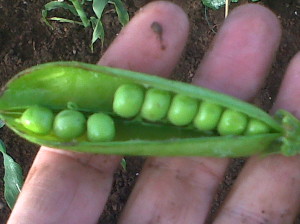Another entry in the allotment diary where I finally finish digging over and weeding the potato patch. My late potatoes are certainly living up to their name and are late! I now have 7 rows in and another 1 to go – unfortunately I was digging without my glove on and have a very nice (and painful) blister in the middle of one of my palms.
I will show you how I plant potatoes without all the hassle of digging trenches, which is frankly back breaking! It is much easier and quicker and you do not need to earth up so much, if at all. We will also look at the peas which I planted a couple of weeks ago. The shoots are just starting to come through but fewer have germinated than I would prefer. I will be soaking some seeds this week and planting those in the gaps.
The rhubarb is still going crazy, had four more decent sized stalks off it today, and the parsnips are now six feet tall and flowering … will attempt to gather the seeds before they blow everywhere!
Enjoy the video and please leave a comment with your thoughts and tips!
























